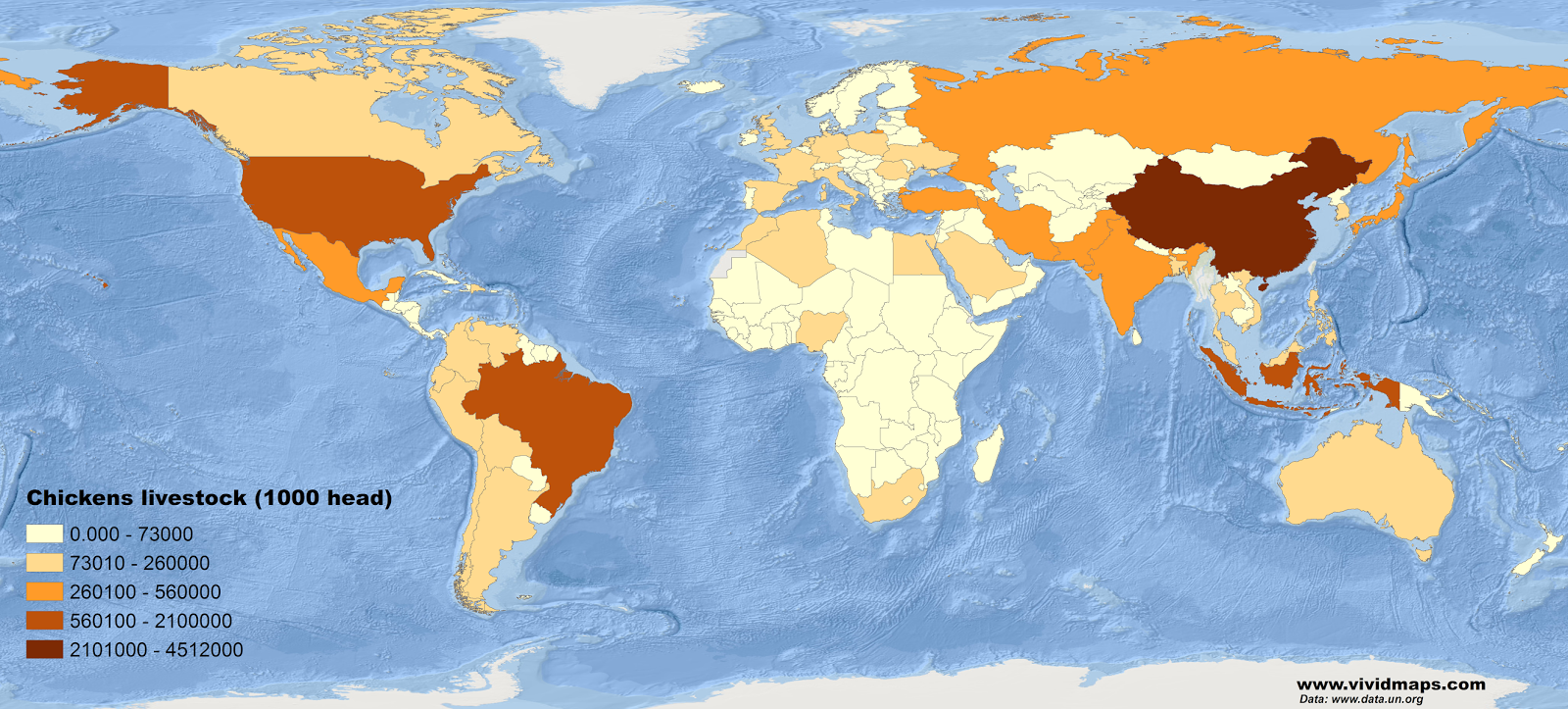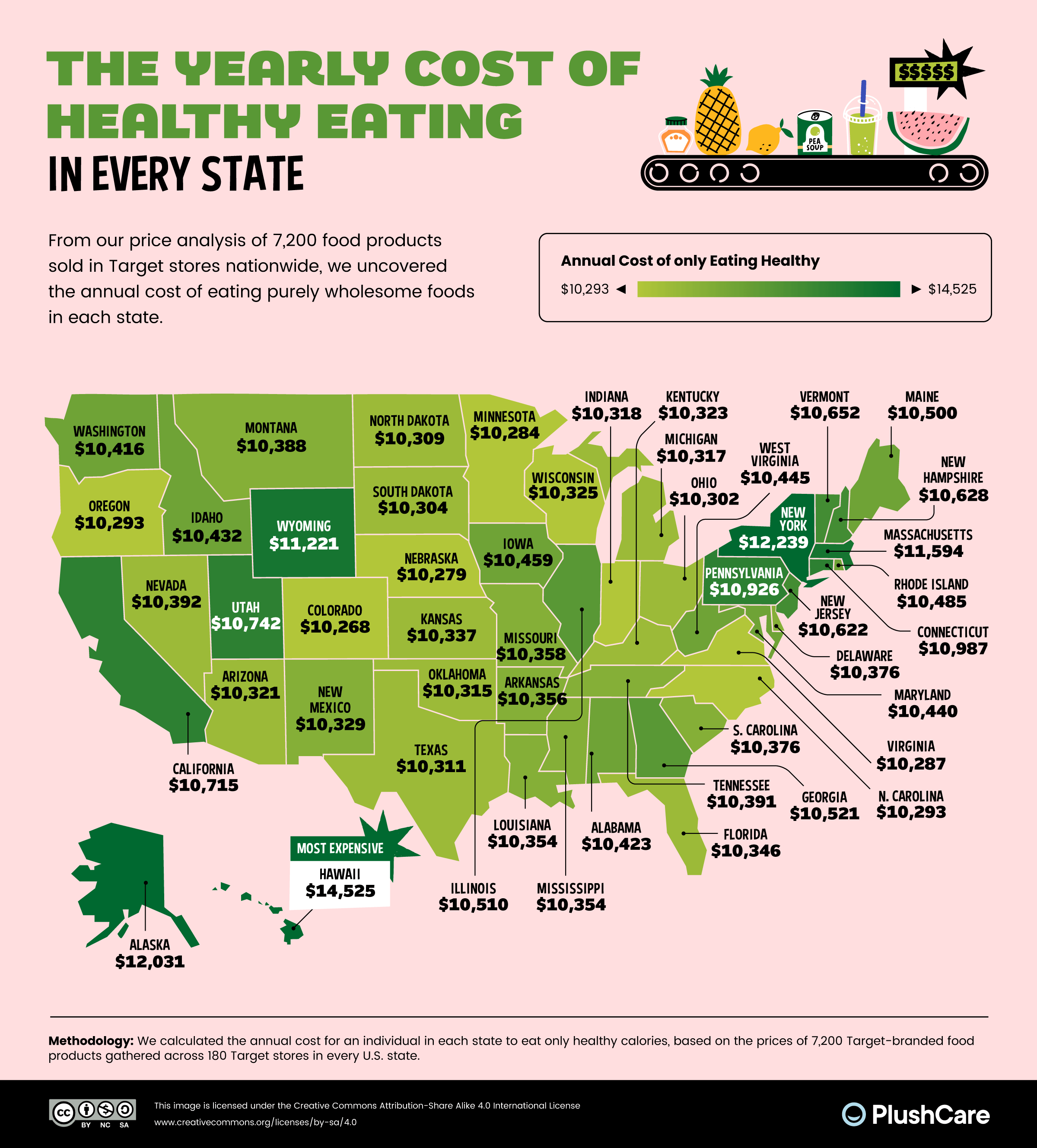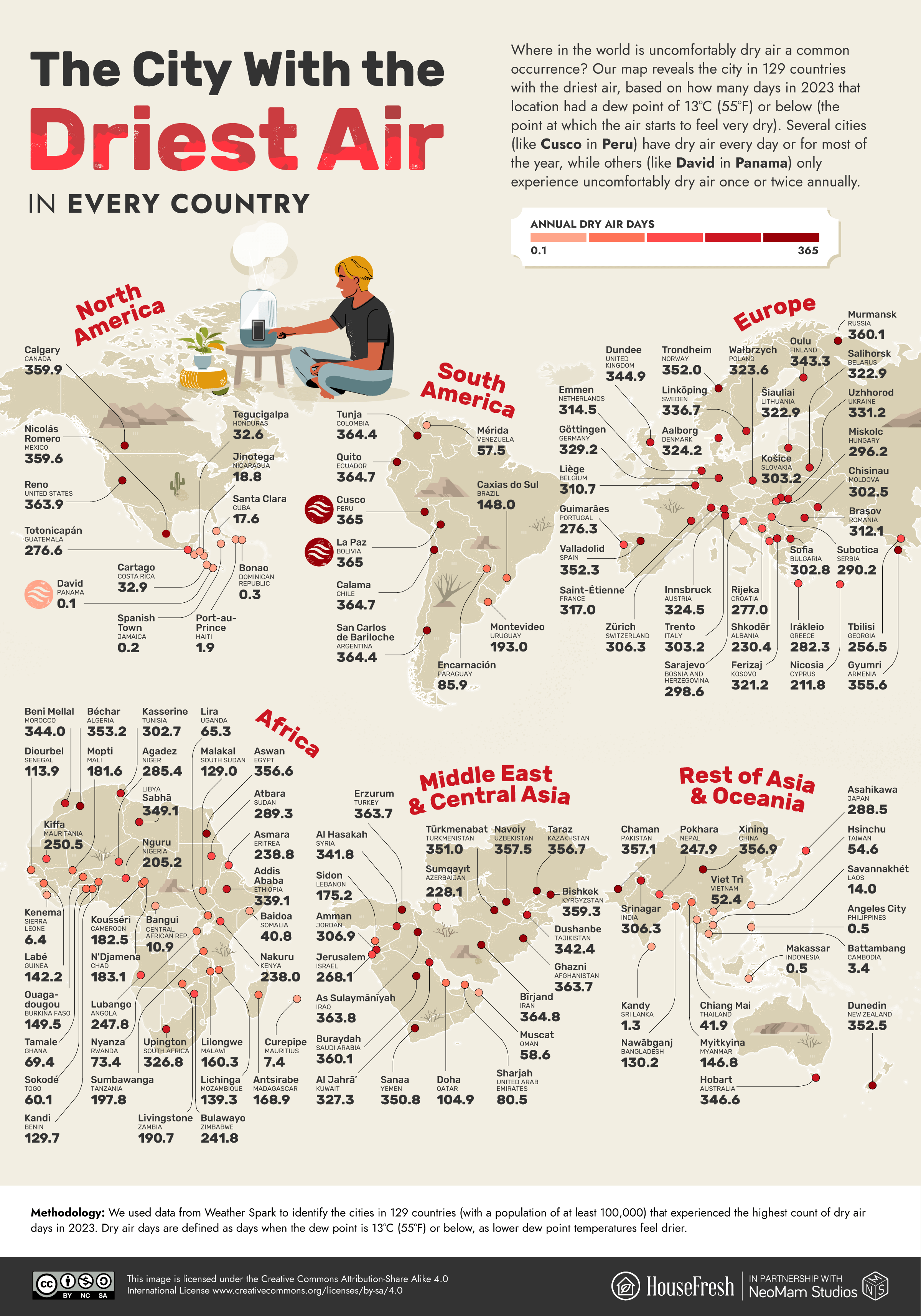The Best and Worst U.S. cities for Skin Health Mapped
We’ve all had those daytimes when our skin is not looking its best, despite doing all the right things to maintain it healthy and happy. Tons of things can impact our skin from the inside out, like health conditions and hormonal changes, but if you’re having a problem with your skin, it might also be down to some environmental factors at play where you reside.
Harmful levels of air pollution, for instance, still impact over 40% of Americans, despite great strides made by the United States government since the Clean Air Act of 1970. And while you might be knowledgeable that air pollution can provoke a range of health problems when inhaled, did you know that it can also cause the skin to age prematurely and worse conditions like eczema?
Air pollution is not the only environmental factor affecting your skin. Hard water (water with high levels of dissolved magnesium and calcium) and ultraviolet light from the sun are also proven to induce skin damage, with health troubles resulting from exposure varying from itchy and dry skin to skin cancer.
Individual measurements of air pollution, ultraviolet light, and hard water will differ from city to city, but where in the United States can you find the extremely worst skin health conditions based on all of the factors combined?
HouseFresh team created an index ranking of 328 American cities to determine which cities have the harshest effect on the skin.
Table of Contents
Key Findings
- Scottsdale in Arizona is the worst city in the United States for skin health.
- The best city in the U.S. for skin health is Auburn in Maine.
- Cities in California and Arizona are among the worst for skin health.
- Maine and 5 other U.S. states bordering Canada are home to the best cities for your skin.
The Worst City For Your Skin in Every U.S. State
According to Statista, the United States spent over $18 billion on skin care in 2021 — more than any other nation in the world. But depending on certain external factors, your skin’s health may also affect where you live. The map below shows the worst city for skin in the United States.
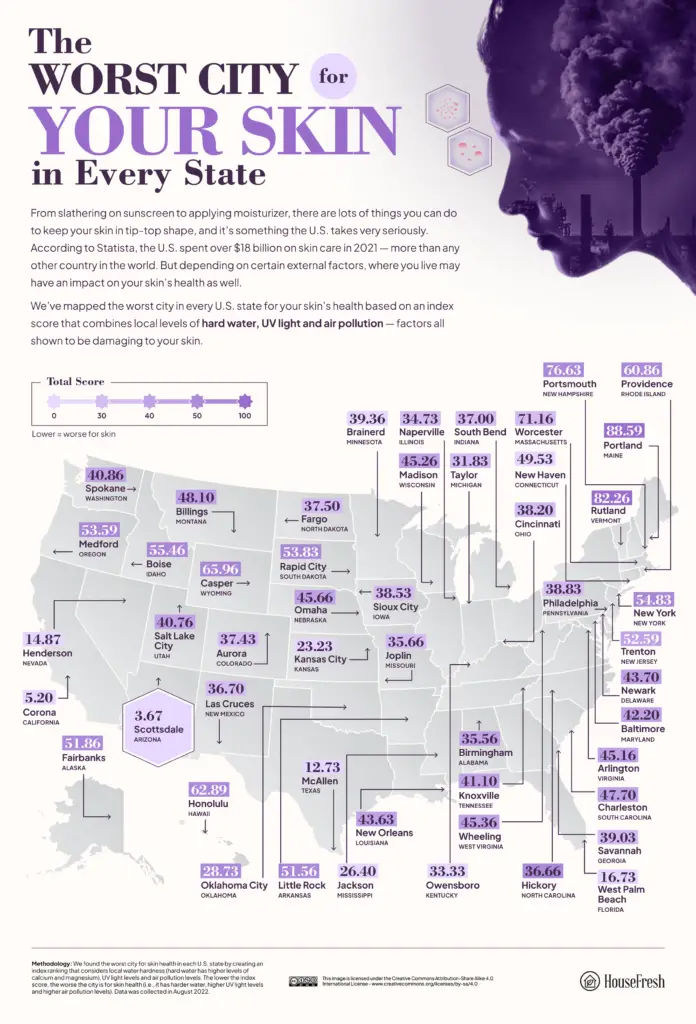
The 20 Worst Cities for skin in the United States
The worst city for skin health in the United States is Scottsdale in Arizona. The city’s water hardness, ultraviolet light levels and air pollution levels contribute to an index score of 3.67 – the lowest of any American city. Six other cities on the list are located in Arizona, which has some of the hardest water in the country and is one of the least humid states — two factors that are linked to sore skin conditions like eczema. Eight of the worst cities for skin health are located in California, which, like Arizona, is one of the sunniest states in the United States.
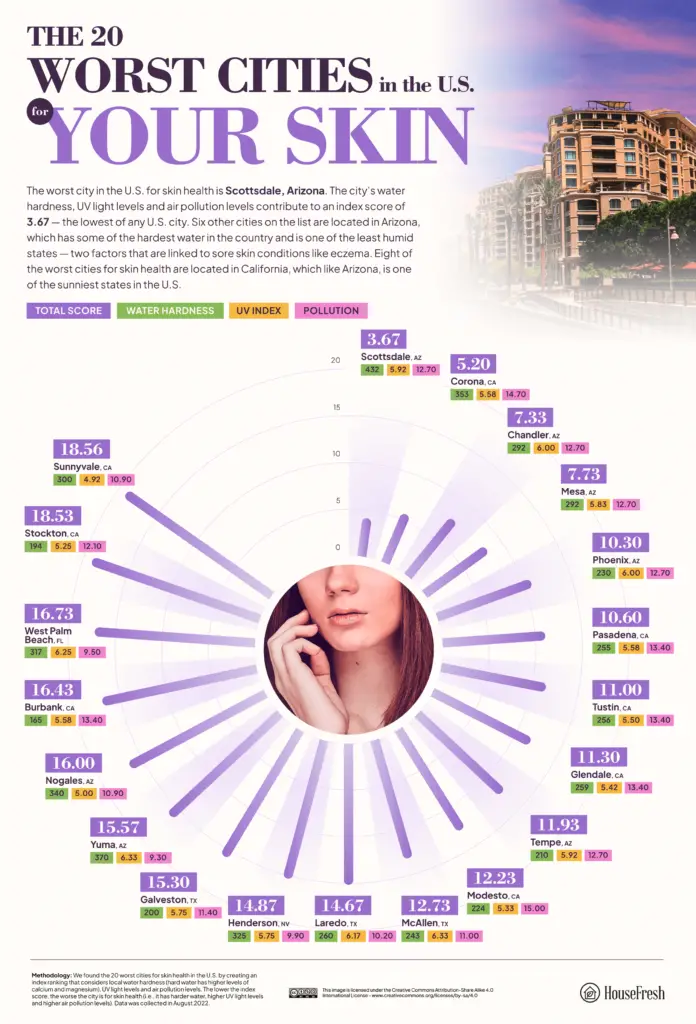
The 10 Best Cities for your skin in the United States
Maine boasts the best environment for skin health: five of the top 10 American cities for skin health are located in Maine, with 3 cities there taking the top three spots. The best city of all is Auburn in south-central Maine, with a score of 95.1. All of the U.S. states are home to the best cities for skin health border Canada, a country that has some of the cleanest air in the world, according to the World Health Organization.
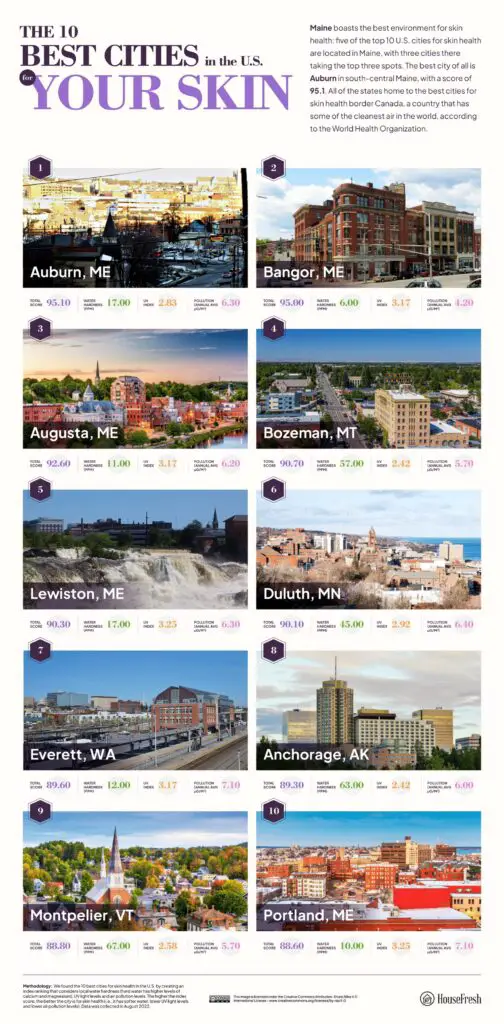
How Hard Water, UV Levels, and Air Pollution Levels Affect the Skin
Did you know that the skin is the human body’s largest organ? It’s also the most seeable indicator of your age, which is why defending yourself against the early aging effects of ultraviolet light and air pollution is so essential. These aging consequences include yellowed and bumpy skin, wrinkles, and age spots.
Too much exposure to ultraviolet levels can cause more harmful health problems to develop, like skin cancer. Getting 5 or more sunburns in your life more than duplicated your chance of developing melanoma, and your skin can be damaged by ultraviolet light even without an apparent burn.
Luckily, it’s relatively easy and affordable to defend yourself from skin damage induced by either ultraviolet (UV) light, hard water, or air pollution.
Study for a breakdown of each factor’s harmful effects up close and for advice on protecting your skin’s health like a pro.
How environmental factors can affect your skin’s health
- Hard water mixed with soap and shampoo can leave a residue on your skin, clogging pores and causing dry skin and issues like eczema.
- UV light increases your risk of developing skin cancer and skin conditions like solar elastosis, which causes the skin to thicken and become yellow and bumpy.
- Air pollution can worsen skin conditions like eczema and prematurely age the skin by causing wrinkles, dull skin, age spots, and pigmentation issues
How to protect your skin from environmental damage
Environmental factors, both at home and outside, can cause visible and invisible damage to your skin and potentially lead to health problems. Luckily, looking after your skin has never been easier with so many creams, lotions, and potions on the market.
1. Use broad-spectrum sunscreen SPF 30 or higher every day
UV light exposure increases your risk of developing skin cancer and prematurely ages the skin by causing wrinkles and age spots.⁵
● Why it works: Broad-spectrum sunscreens protect your skin against both UVA and UVB rays by either absorbing UV light or deflecting it off of your skin.
2. After bathing, moisturize your skin while it’s still damp
Research has indicated a link between hard water and the worsening or development of skin conditions like eczema.
● Why it works: Applying a moisturizer to your skin immediately after bathing locks in moisture and stops the minerals present in hard water from settling on your skin.
3. Wash your face with a high-quality cleanser at the end of the day
Particulate matter (PM) is the name given to solid or liquid particles in the air (for example, smoke or dust) that collect as air pollution. These particles can become attached to your skin when you’re out and about.
● Why it works: A good cleansing routine at the end of the day will remove pollutants from your face and keep your skin healthy. Some experts recommend a ‘double cleanse’ method, which is where you clean your face with an oil-based cleanser followed by a water-based one.
A few simple adjustments to your day-to-day routine can help to protect your skin from environmental factors, keeping it happy and healthy. For further advice or skin concerns, consult your doctor or a dermatologist. And remember, any new changes to a mole should always be checked by a medical professional.

Methodology
Air pollution data was taken from the Environmental Protection Agency’s Air Quality Data and State of the Air report by the American Lung Association. A higher value represents more air pollution.
The UV Index Scale is a standard measurement of the strength of sunburn-producing ultraviolet radiation at a particular place and time. Usually ranging from 0 to 11 (higher = more ultraviolet radiation), an average figure was taken for each U.S. city across all the months of the year. UV index data was sourced from WeatherUS and WeatherWX.
Water hardness is measured in parts of calcium carbonate per million, with higher values signifying harder water and lower values signifying softer water. Data was collated from Hydroflow-USA.
Where possible, city-level data was used; however, where data wasn’t available at a city level, metro or county-level estimates were used instead. The final list of cities includes 328 cities, for which all three data points were available.
Each of the above metrics was given a weight of 33.33 to add up to 100 total, and each city was scored on its air pollution, UV index, and water hardness, with higher scores indicating being better for skin and lower scores being worse. High-scoring cities are places with cleaner air, less UV radiation and softer water. Cities with lower scores have higher pollution levels, more UV radiation, and harder water.
The data was collected in August 2022.


